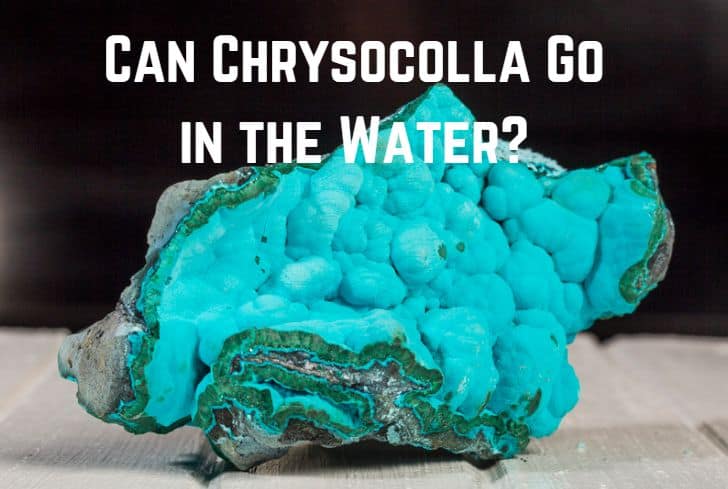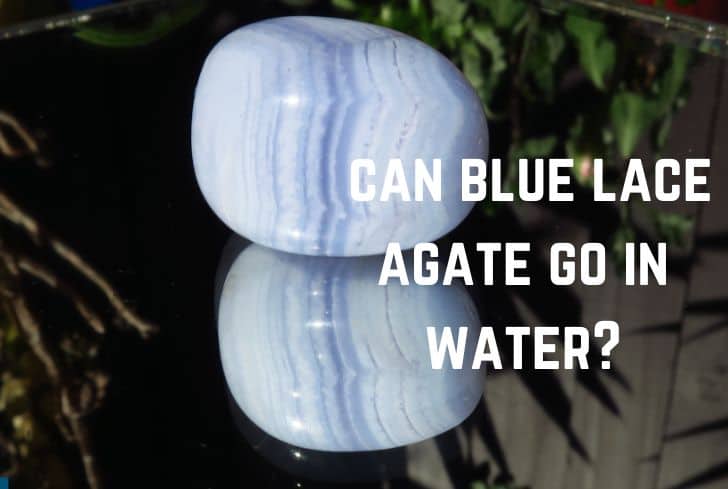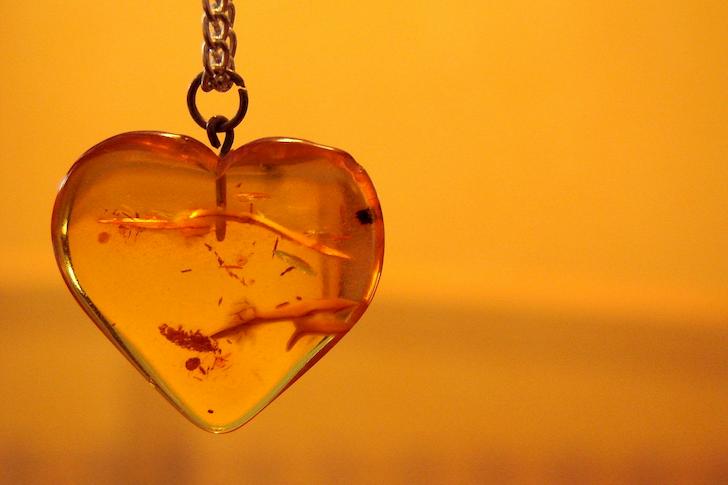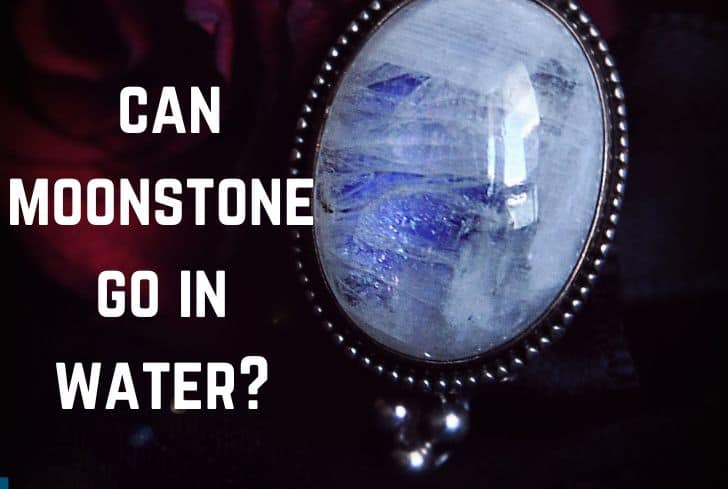Can Pyrite Go in the Water? (Not Recommended)
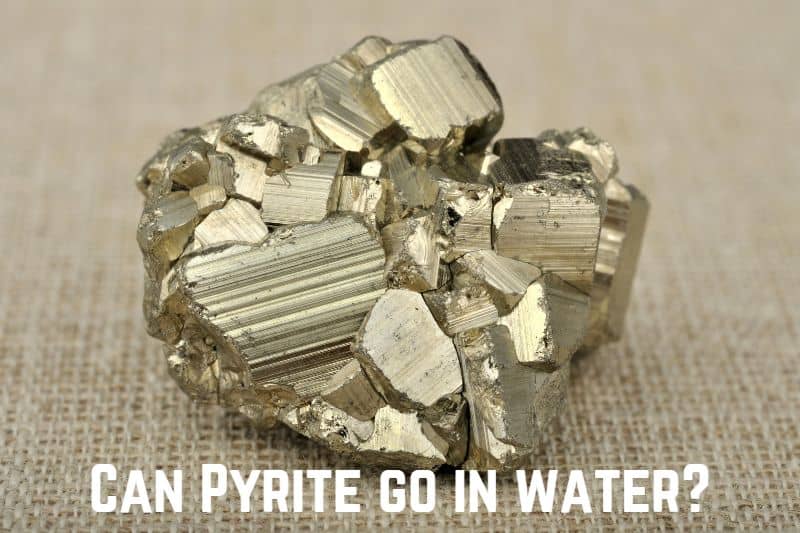
Pyrite is a brass-yellow mineral having the chemical formula FeS2. It is the most abundant sulfide mineral, which occurs in igneous, metamorphic, and sedimentary rocks worldwide. Its name is derived from the Greek term πῦρ (pyr) meaning “fire”.
This is because it was historically used to ignite a fire by striking it against another hard material and creating sparks. Have you ever wondered if pyrite can go in the water? In this article, we are going to discuss just that. We will also look at the stone’s interaction with salt water, moon water, and sunlight. Finally, we will also talk about its properties and uses.
Read: Can Kyanite Go in the Water? (No…)
Can Pyrite Get Wet?
It is not recommended to get Pyrite wet. Although pyrite’s hardness is above the minimum value required for minerals to be safe underwater, its composition is what causes problems. Pyrite contains iron, which can react adversely with water.
Mohs Hardness Scale is a relative measure of a mineral’s resistance to scratching. Besides that, it also indicates a stone’s relationship with water. Usually, a value over 5.0 implies that the stone is safe for immersion.
Softer stones like selenite (2.0 on Mohs Hardness Scale) should never be immersed, but even harder stones like pyrite are not entirely safe. Water enters the crevices of stones, expanding their cracks.
These fissures can slowly damage the structure of the stone, making it prone to cracking. Water also tarnishes the appearance of stones. It strips off the polish from their surface, making them look duller.
Pyrite has a value of 6-6.5 on the Mohs Hardness Scale. This is clearly above the minimum value required for being water-safe, however, the mineral’s composition is what causes issues. Pyrite is an iron sulfide, and as we know, water damages iron.
Therefore, it is not recommended to get pyrite wet.
What Happens When Pyrite Gets Wet?
Although Pyrite has a value of 6.0-6.5 on the Mohs Hardness Scale—above the minimum value required for minerals to be safe underwater—it is not recommended to get it wet. This is because its iron content reacts adversely with water and can get rusted.
When iron is in contact with water/moisture for a long time, iron and oxygen combine to form iron oxide. This is also known as rust, which appears as a reddish-brown coating. Rust damages metal surfaces, posing a serious problem in buildings, cars, structures, etc.
Pyrite is an iron sulfide, so it contains a large proportion of iron. When it comes into contact with water, it can get rusted. Pyrite has a metallic luster that shines under light. However, prolonged exposure to water cause black/brown patches due to the formation of iron oxide.
Therefore, it is not recommended to put pyrite in water. Instead, you can use other methods to recharge the stone, which we will discuss later.
Can Pyrite Go in Salt Water?
No, Pyrite should not be put in salt water. Water itself is damaging for pyrite because it reacts adversely with iron and creates rust. When we bring salt into the mix, it makes the corrosive effect even worse.
When dissolved in water, salt can seep into the crevices of the stone. Salt particles remain there even after the water evaporates, and they widen the cracks. These fissures can slowly damage the structure of the stone.
Salt water also tarnishes the appearance of the stone by stripping off the polish. Pyrite is known for its metallic luster, which will get damaged because of this. Finally, salt can also react adversely with the elements of the mineral, and this is especially true for minerals having iron like pyrite.
Saltwater hastens the process of rusting by making the metal lose its electrons more easily. Therefore, it is best not to immerse pyrite in salt water. It can be cleaned by other methods, which we will discuss below.
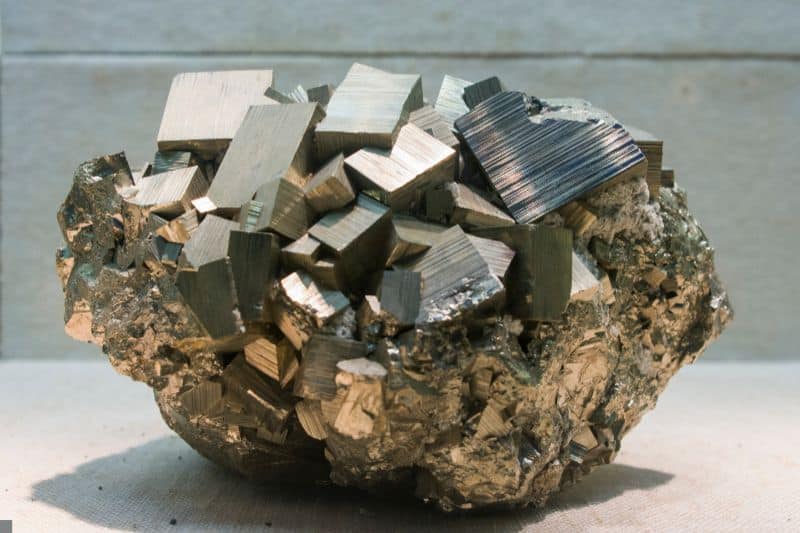
Can Pyrite Go in Moon Water?
No, Pyrite should not be put in moon water. This is because water (even moon water, which has been charged with moonlight) reacts with pyrite’s iron content and causes rusting. It is better to use alternative methods for recharging pyrite.
Placing stones in moon water is a popular way of recharging them. However, it is not suitable for all stones. Water can tarnish the appearance and damage the structure of many stones. While pyrite’s hardness is above the minimum required for minerals to be safe underwater, its composition causes issues.
Pyrite is essentially made up of iron, which reacts with water to form iron oxide or rust. This will ruin the metallic luster of the stone and can also damage it. Therefore it is not recommended to put pyrite in moon water.
Can Pyrite Go in the Sun?
It is not recommended to put Pyrite out in the sun. This is because pyrite already has associations with fire, and keeping it out in sunlight can overstimulate the stone. It is best to recharge the stone through other methods.
Pyrite acquires its name from the Greek term pyr meaning “fire”. It has historically been used to ignite fires by striking with a hard surface and creating sparks. Given these associations, sunlight can be excessively overstimulating for the stone.
While pyrite is believed to help manifest your dreams in the real world, the sun’s energy can excessively charge it and make you feel burnt out too. Therefore, it is better to use other methods to recharge the stone.
How to Cleanse Pyrite Crystal?
You can cleanse pyrite in the following ways:
- Sage: Treating pyrite with the smoke of sage is the most effective way of cleansing it. We have already discussed the associations of pyrite with fire, so it makes sense why smoke would be perfect for cleansing it. Just as pyrite sparks a fire, it also can spark your inner dreams into reality.
- Salt: While saltwater is not safe for pyrite, salt is perfectly fine. Salt can absorb negative energy, and you can bury your stone in a bowl of salt overnight. If you don’t wish to bury your stone or get it dirty, then you put it in a bag and then place them over salt. You can also use a smaller bowl to keep the stone. Afterward, make sure you discard the salt.
- Earth: Placing pyrite underground is another great way of recharging it. Besides cleansing, this also resets the stone to its essential state, before it was mined. This refreshes the stone, giving you a clean slate. You can put the stone in your garden and leave it there for a few hours. Make sure that the ground is not wet and that the weather is not too hot (avoid sunlight). Sand or dry soil would be best, as they lack moisture.
Properties and Uses of Pyrite
These are the properties of pyrite:
- Appearance: Pyrite has a brass-yellow color with a metallic luster. It often gets tarnished (due to the iron reacting with oxygen) to a dull brass color. The stone is completely opaque, and it leaves a greenish-black/brownish-black streak.
- Composition: Pyrite is an iron sulfide having the chemical formula FeS2. It usually forms cuboid crystals, which sometimes occur in close association to create raspberry-shaped masses called framboids. The stone breaks with a conchoidal fracture.
- Occurrence: Pyrite is the most abundant iron sulfide, and it occurs in igneous, metamorphic, and sedimentary rocks all over the world. It is often associated with sulfides or oxides in quartz veins. Pyrite also occurs as a replacement mineral in fossils.
- Fool’s Gold: Pyrite is called “fool’s gold” because it is often mistaken for gold. This is because its gold color, metallic luster, and high specific gravity are similar to that of gold. In reality, gold is much more soft & malleable. However, pyrite does occur with gold in some places, and the stone can be mined to get small proportions of gold.
- Hazards: There are many hazards associated with pyrite. Its presence in coal contributes to air pollution and acid rain when coal is burned. Moreover, the sulfide minerals of coal also lead to acid mine drainage. When pyrite is present in construction material, it can lead to weakened structures as the mineral oxidizes easily.
These are the uses of pyrite:
- Production of Sulfur: Pyrite is commercially used for the production of sulfur dioxide and sulfuric acid. It is also used in the paper industry.
- Gemstone: Pyrite is also used in jewelry. Marcasite jewelry contains pyrite and not marcasite (which is much lighter in color, brittle, and chemically unstable). These pyrite pieces are often set in silver and were quite popular during the Victorian era.
- Ore of Gold: Although it is known as fool’s gold, pyrite is sometimes associated with gold. The two minerals often form together, and in some of these deposits, people mine pyrite to get small amounts of gold (which are still valuable).
Conclusion
In this article, we have talked about the interaction of pyrite with water. Although the mineral’s hardness is above 5.0, it is still not safe in water due to the presence of iron, which rusts in the presence of moisture. Therefore, it is better to charge pyrite through other methods like sage, salt, etc. We also looked at the properties and uses of the stone.


